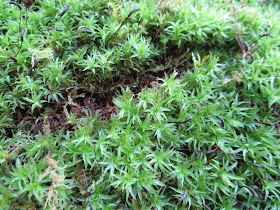 |
| SJG • 6/22/15 |
How can we respond to a question of
"What is Japanese Garden?”
in a simple and clear manner for Japanese gardens outside of Japan?
by Koichi Kobayashi, June 2015
Preface
I started writing this paper to create an introduction as to how best to develop, design andfoster Japanese gardens abroad.
Japanese garden has been said to be an important aspects of Japanese culture which nurtures international understanding and friendship. Many Japanese gardens have been built as products of attraction to things oriental, government public relations in form of expositions , friendship-sister city relationship, showing of wealth of individuals and others over the years in America and in Europe.
Even though these initial roles still exist, today the role of public and private Japanese gardens, especially in North America has expanded beyond landscaping and recreation; they are used in commercial settings, for weddings and events, for cultural programs for professional medical therapy and more.
I am, however, observing recurrent problems at some gardens facing changes in a name of making the gardens adapting to modern requirements and sustainability contrary o the soul of Japanese garden and problems in creation of gardens which astray from the soul of Japanese garden in my understanding.
I truly believe we should come back to the following to challenge questions:
What is Japanese garden (in Japan ) ? and
What is Japanese garden abroad?
I am staring this inquest by searching for answers to:How can we respond to a question of
“What is Japanese Garden?” in a simple and clear manner for gardens outside of Japan?
Or is that possible, productive and meaningful?
Section 1. Introduction
Although I have been involved in studying, designing, caring and visiting Japanese gardens in Japan and abroad over the years , I have come to point needing to deepen my understanding on “What is Japanese Garden?”, especially for creating and fostering of
gardens outside of Japan. In order to do that, I have come to realize that I need to be able to describe Japanese Garden in a simple and as much a clear manner in achieving this.
That is the reason why I have started writing this paper.
I have started it first by learning and exploring basics of Japanese gardens based on existing literature written by many scholars and professionals from Japan and abroad. Some of the literature I reviewed are listed in bibliography attached.
Subjects matters reviewed included the following: Basics of Japanese garden: Principles, Technology, Elements and Styles.But this examination of existing literature has still not given me a satisfying answer but only a beginning.…………
On my way home from the Second Conference of the North American Japanese Garden Association in Chicago, 2014, I came to realize that I have been evading an important question on Japanese Garden. The question is “What is Japanese Garden (Abroad)” and how you define it.
A number of us, Canadian (German), American(Japanese), and British sat around a lunchtable at historic Oak Park after touring residence of Frank Lloyd Wright and started talking about on what makes Japanese Style Garden. There has been continuing discussion on Japanese Style Garden and Japanese influenced/inspired Garden. I remember that we had a round table discussion session on this subject at the Fourth International Japanese Garden Symposium in Seattle, 2004. Prior to the symposium I distributed a questionnaire on this subject to help guiding the discussion. Survey outline and findings from this survey are briefed in the following section.
At the lunch table I told my friends that I recall two occasions when I found a sensation of experiencing Japanese Garden: one at a time entering into the forest of high country in Yosemite and the second when visiting a private residential garden designed by James Rose in Ridgewood, New Jersey. The garden did not have any trimmings of traditional Japanese Garden but there was a spirit. What were they that I felt? My understanding of Japanese garden at that time was limited as compared to today. I must have relied mostly on my spatial and aesthetic sensitivity on landscape space as much the same way as Professor Garrett Eckbo explained his way of seeing Japanese garden.
I hastily develop a survey in order to find the answer to this difference as shown below before the 2014 conference and mailed them to potential Japanese respondents and other friends.
I would like to challenge you to share your knowledge and wisdom. I would be delighted to have your continuing support. You could fill in an attached table and answer few questions on Japanese Garden.
At Japanese Garden, there exists following characteristic as contrasted to other gardens in Europe, America, and others:
A. It is naturalistic in space, form and texture
B. It is curve linear in form and shape
C. It recalls natural scenery ( famous/historical location)
D. It recalls religious teaching
E. It is symbolic/miniature.
F. It has dynamic balance and asymmetry
G. When entering a garden, it does not reveal whole.
H. It contains traditional landscape furnishing such as lantern, bridge etc.
I. It consists of traditional landscape elements such as earth, water and feature vegetation.
J. It heals your soul and mind....
The rest of article is here: (you have to register at Academia, it's free):
https://www.academia.edu/13182203/Perspectives_on_Japanese_Gardens_Abroad
 |
| SJG • 5/2/15 |














